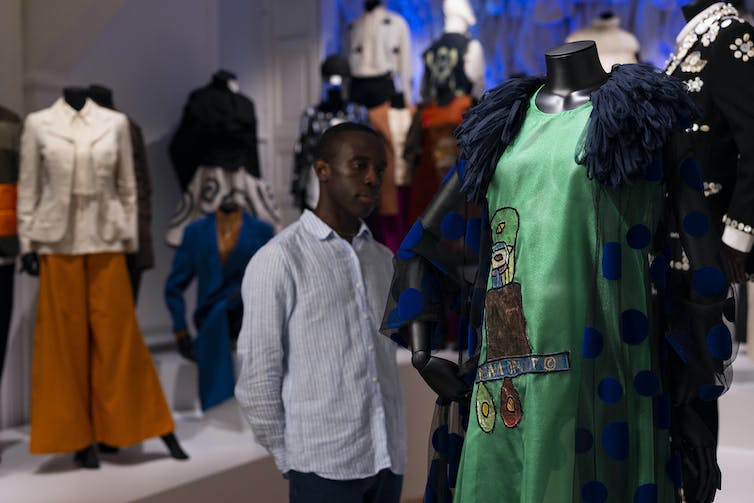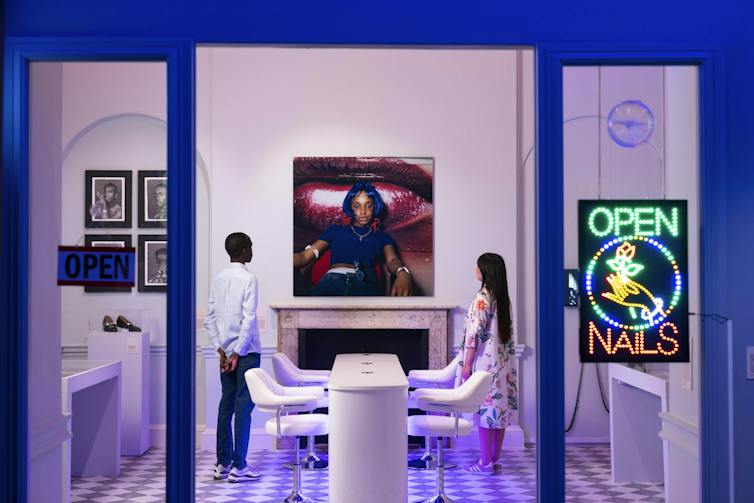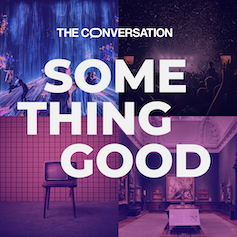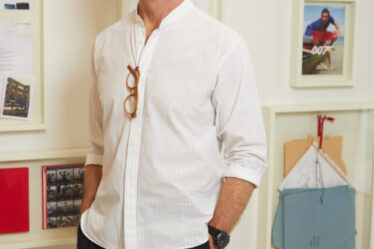
The story of black people is often told through a narrow lens, explained curator Andrew Ibi, at the private viewing of his new exhibition at Somerset House. Looking to widen that lens, The Missing Thread tells the rich history of black British Fashion.
With designs by Bruce Oldfield, Ozwald Boateng, Bianca Saunders, Saul Nash and the late Joe Casely-Hayford, the show presents a fusion of black British culture through displays on fashion, music and art from the 1970s to the present.
The Missing Thread is a careful and honest curation of black identity and displacement that tells stories of creativity and resilience. The exhibition begins with “Home”, an area filled with photography, artwork and fashion representing what it meant to be black and British in the 1970s and 1980s.
Generally speaking, home is considered a place of shelter, recovery and nourishment – but the black immigrant population in Britain often found home to be a place of struggle, racism and lack of opportunity. The pride and disappointment of the black experience in Britain is honoured through work by artists such as Vanley Burke, Charlie Phillips and Neil Kenlock.
Designing a life
Next is “Tailoring”, a room that depicts the expertise and craft of the black community. At the private viewing I attended, curator Harris Elliot explained that “tailoring is not just about the suit, but armour. This room is a statement of our protection, our identity and the struggles for blacks coming to this country”.
The ability to blend traditional heritage, trade and craft passed down through generations through tailoring formed a sense of community for black Britons. Here, we see designs from tailors and designers Charlie Allen, Nineveh Khomo and Bruce Oldfield.
PA/David Parry
But through the next corridor, in the “Performance” room, the atmosphere changes. You can smell the nostalgia of a different time, when music and pop culture formed black identities and gave us a sense of pride and confidence. The room is designed as a stage because, in a sense, the black community feels as if we are “always performing”, says Harris.
In this room, speakers stand seven feet high, with images representing 1980s hip-hop style and artists including MC Duke and Skin, the lead vocalist for Brit-rock band Skunk Anansie. You feel as though you have walked into a rave. This is fitting for the introduction to the next room, “Nightlife”.
“Nightlife” provides an look into the club culture of the 1980s. And the inclusion of an active nail salon behind the performance stage makes this space so exciting. Hair and nails are essential to the black cultural experience. Not only for beauty and adornment but for creating a space for socialising, safety and relaxation.
The many styles and expressions of black women dressing up for a night out adorn the salon’s walls. You feel the freedom, the connections and the friendships created in this beauty establishment when black women needed to escape from the hardships of everyday life. Club life was a safe escape for black Britons to be embraced by black traditions, culture and community – and it remains so today.

PA/David Parry
Runway fashion was not accessible to black people until recent years. Re-imagined secondhand clothing, patchwork and symbolic embellishments were the mainstay of black British style.
As you exit the nightlife and weave your way around the stage, with a stop by Nicholas Daley’s music and textile installation, the show navigates you to an exquisite display of work, an encore of Joe Casely-Hayford’s one-off pieces that pushed the boundaries of fashion and style. He was a true pioneer of his time and his work with Bono ends the show.
The Missing Thread highlights black culture’s contributions to art, fashion and music by highlighting its resiliency, resourcefulness and self expression.

Looking for something good? Cut through the noise with a carefully curated selection of the latest releases, live events and exhibitions, straight to your inbox every fortnight, on Fridays. Sign up here.



